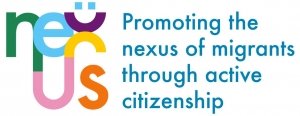Action For Society
A joint platform for safer citizens through preventative collaboration.
Tool Self-Assessmet
- Reflect back on the objective of the tool you built: did you exceed it, or fall short? If so, why?
Action for Society is a joint platform for safer citizens through preventative collaboration. We enable a unified force where every voice is heard and everyone contributes in different ways. Person by person, organisation by organisation and area by area.
This is created through an app development for individuals and an Insight Portal for schools, associations, and municipalities. Before the app goes live for the public, a pilot test is carried out to refine the details, starting in Hökarängen, Stockholm.
App, Insight Portal & Education Platform— How it’s connected:
In the app, individuals are involved and make their school, association, workplace or living area safer, more fun and better. One can suggest ideas, invite others to activities or read about other initiatives aimed to create security. Topics like self-esteem, bullying and resolving conflicts without violence can also be studied in the app.
The premium service gives schools, associations, municipalities and companies access to the Action For Society Insight Portal and education platform where they can connect their students, members, citizens or employees. Here, their ideas, activities and other events are gathered from the app that helps the businesses to get a better idea. It also makes it easier to act both directly and preventively. All cases also contribute to following the specific security development for the business and the areas in which they are interested both in real time and over longer periods.
For organizations, there are selected, evidence-based educational programs based on The Non-Violence Project Foundation’s methods to inspire, motivate and engage people in various ways, for example around self-esteem, harassment and handling conflicts without violence
The Action For Society idea is preventive work to secure individuals’ right to freedom from harassment, regardless of gender, background, religion, or sexual orientation. The initiative also wants to secure young people’s right to come to school, express their opinions, practice sports etcetera, without fear of being bullied.
The initial objective, a platform for greater safety through collaboration, has now grown into an AI based digital infrastructure for inclusion, trust and socially sustainable societies as a whole. The issue of safety is the first step towards that. In that way, our tool has exceeded our expectations.
- What are the tools’ metrics for success and what does metric say – how well did the tool do?
We are still in open beta with a pilot test in Hökarängen, Farsta, outside Stockholm. Primary metrics for success at this point is to evaluate downloading of the app and digitally onboarding users in the app. Metrics so far tell us that we have greater success when present physically to inform and guide people along, but it has also helped inform us how we can do this digitally. In that sense, it has been a successful evaluation.
- Were your assumptions that the tool you built would: increase participation/engagement or tackle an issue/raise awareness correct? Do you think you chose the right approach – and what would you do differently?
The app is not quite technically ready for digital onboarding peer-to-peer, but that is the end goal. By enabling users to “put safety on the map for each other in different ways ”, one of our assumptions was that the map would be a key feature and that volume would therefore be critical. That assumption is also one of the reasons why we focused our pilot to one geographical area, to easier see the effects locally, rather than spread out. That assumption has proven correct. The approach here was to use schools and local sports clubs as hubs, to enable users to build connections within already existing everyday networks as a start. In that way, we would also star with younger people. However, we are now evaluating a broader approach, with the end goal to create local mini socially sustainable societies.
- What are you hearing from users? What do they enjoy in tool? What do they find challenging?
That it is a very welcome initiative for the greater good. That it is great to be able to influence things, to be able to share what you think and for that to have an effect in the society we share. Even if you are not walking around feeling unsafe yourself, it’s great to know that you can help others who do in different ways. The challenge for many users so far has been too many features at once in the app and not quite knowing where to go first. Therefore, we are currently re-designing the user experience to become more intuitive.
- Did your tool deliver what you were hoping for? Are they useful for your key user audience? Are they being adopted?
The pilot has provided us with many of the insights we need before a broader launch, and we are working closely with some of the users going forward.
- What worked well through the implementation process? What areas have room for improvement?
Downloading and onboarding has worked ok with the current pilot version. However, to create a more intuitive user journey and activation peer-to-peer we are currently re-designing some critical UX parts of the app.
Tool ID
- GOAL:Making public spaces safer and secure through co-deciding and collaboration with citizens
- Made by:Action for society Sweden
- Country:Sweden
- YEARS ACTIVE:Ongoing


